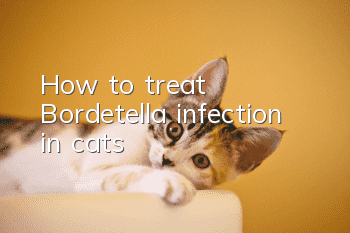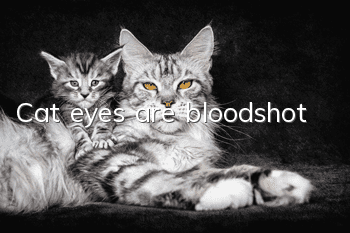How to treat Bordetella infection in cats?

Feline bordetosis is related to respiratory infections in cats. Sick cats usually show respiratory symptoms, such as sneezing, runny nose, etc. This bacterium is part of the normal flora common in cats' nasal cavities and respiratory tracts, so if not properly managed, it may cause cats to become ill.
Cats, unlike dogs, rarely cough when infected with Bordetella. The main symptoms are fever, sneezing, purulent nasal discharge and local lymph node disease. If pneumonia does not occur, clinical symptoms will alleviate within 10 days. Bordetella-related bronchopneumonia often occurs in young cats, and clinical signs include dyspnea, cyanosis, and even death. Kittens cough more than adult cats.
Bordetella can be isolated not only from respiratory secretions, but also from the oral cavity of healthy cats. The disease usually causes symptoms such as dyspnea and fever in cats. Severely ill cats may die. Therefore, when a cat is found to have similar symptoms, it is best to undergo examination and treatment in time.
A variety of antimicrobial agents are available for Bordetella infections in cats. Antimicrobial therapy may prevent the development of bronchopneumonia in young cats given concurrent viral infections of the upper respiratory tract. Although tetracycline is listed as one of the antibiotics used to treat Bordetella infections, many cats cannot tolerate oral administration of this drug.
Amoxicillin and enrofloxacin both have good curative effects on Bordetella infections. Enrofloxacin can be used in kittens but not in puppies when there is no risk of complications from the drug. An initial Bordetella infection in dogs and cats can last up to 1-2 weeks. Treatments of 4 weeks or longer are common.
- What should I do if my cat scratches the furniture? Here’s how to prevent cats from scratching furniture!
- What do cats eat to help recover from cat moss?
- It turns out we all misunderstood cats
- How long does it take for a hairless cat to be pregnant and give birth to kittens?
- Cat’s belly is not big at 46 days of pregnancy
- Daily essentials for pet cats
- How to rescue a cat after drinking alcohol
- Neutered female cat keeps meowing at night
- What is normal for cat poop?
- How old is a male cat for breeding?



